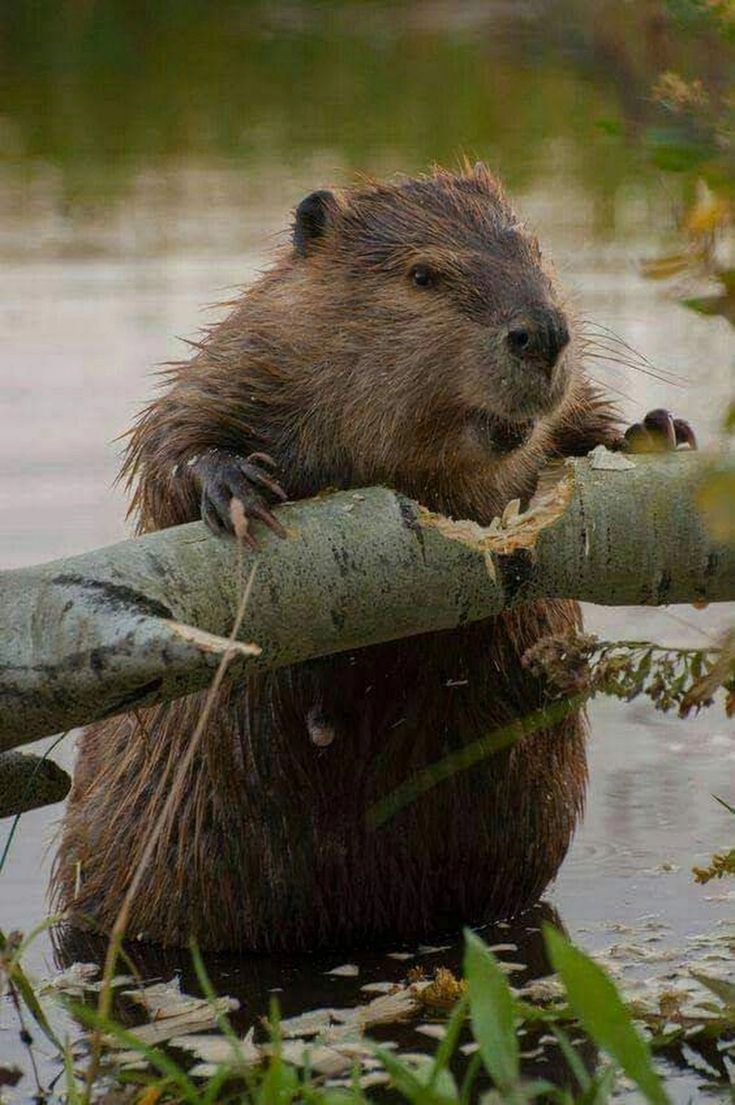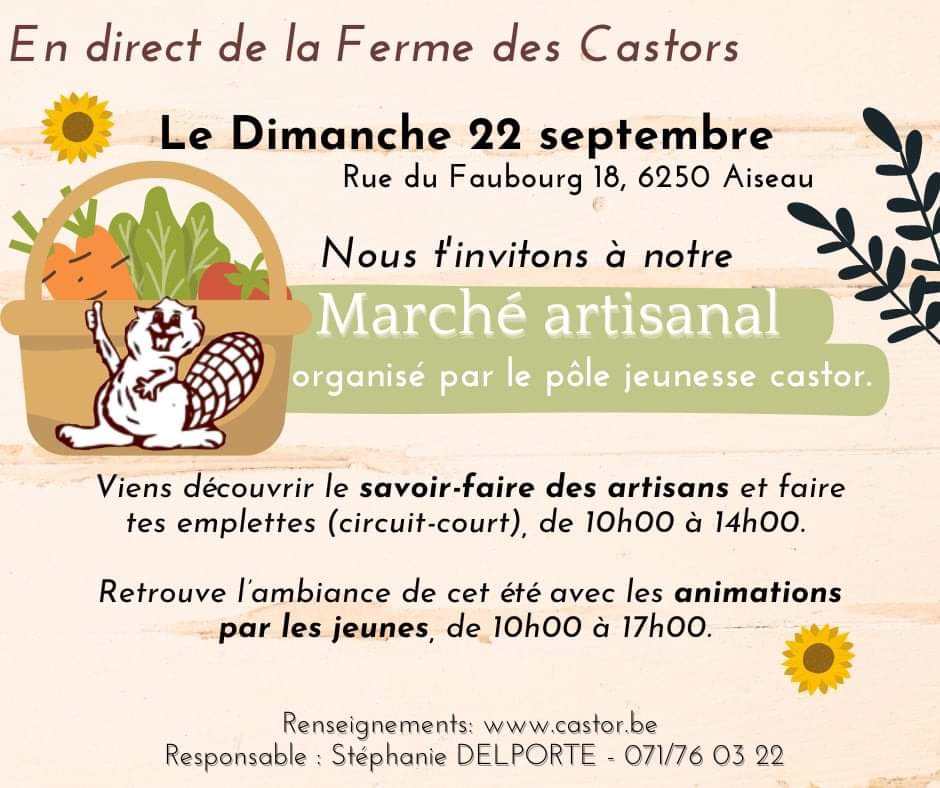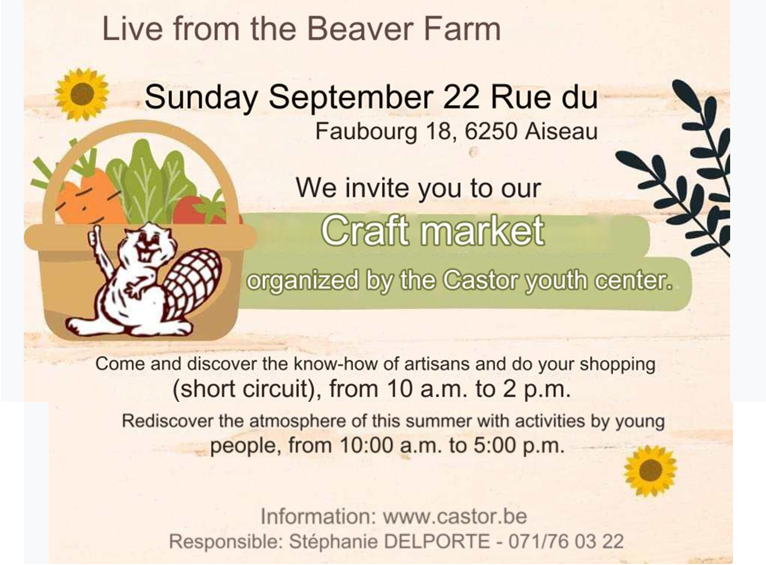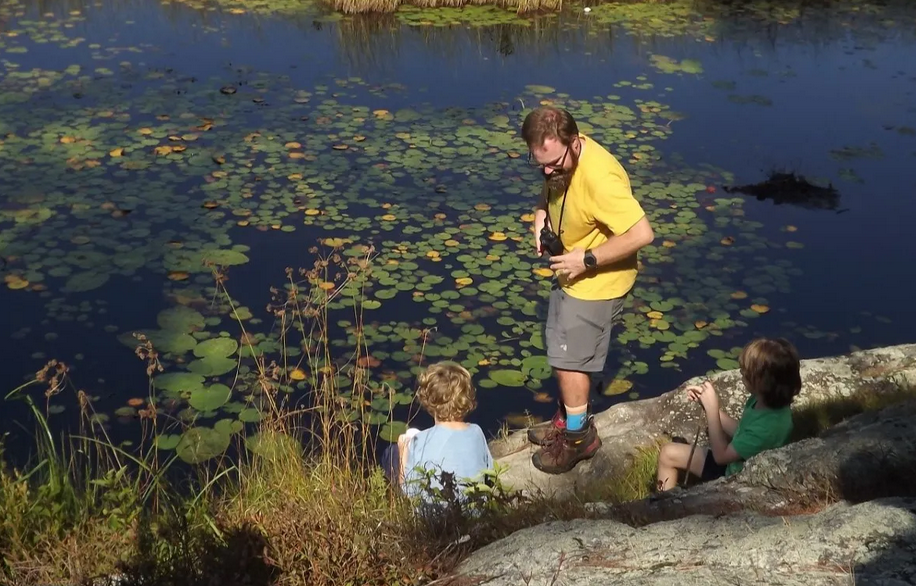The group hiked the Yellow Trail, an easy-rated trail (the young children in the group easily galloped ahead) that loops past the lower pond in Amy’s Park and over Indian Brook. Along the way, Laundry pointed out signs of beaver activity and used a model of a beaver’s jaw, pulled from his backpack, to demonstrate how a beaver drops a tree.
At the pond, the group stopped to examine a beaver dam that slows the rush of Indian Brook. This beaver-built structure creates ponds and marshes above Lake George, which is why naturalists call beavers “ecosystem engineers.” These wetlands are vital to the lake’s health, slowing and capturing sediment that washes down the mountainside, helping to keep the waters of Lake George clear.
 Using several sets of binoculars, also pulled from Landry’s pack, the hikers scanned the water looking for beaver movement through the pond. Although they spotted no beavers that morning, Landry said the beavers are busy this time of year gathering saplings, much in the way squirrels gather nuts, and burying them underwater in the mud surrounding their lodge. This is their winter food supply; the tender bark and leaves will sustain them as they spend the winter in the lodge.
Using several sets of binoculars, also pulled from Landry’s pack, the hikers scanned the water looking for beaver movement through the pond. Although they spotted no beavers that morning, Landry said the beavers are busy this time of year gathering saplings, much in the way squirrels gather nuts, and burying them underwater in the mud surrounding their lodge. This is their winter food supply; the tender bark and leaves will sustain them as they spend the winter in the lodge.
The thing I miss most about the old beaver festivals in the scrubby park was being able to provide tours of the habitat of actual beavers. Jon had so much fun being the naturalist on the trail and talking beavers to appreciative folks. Seeing is important.
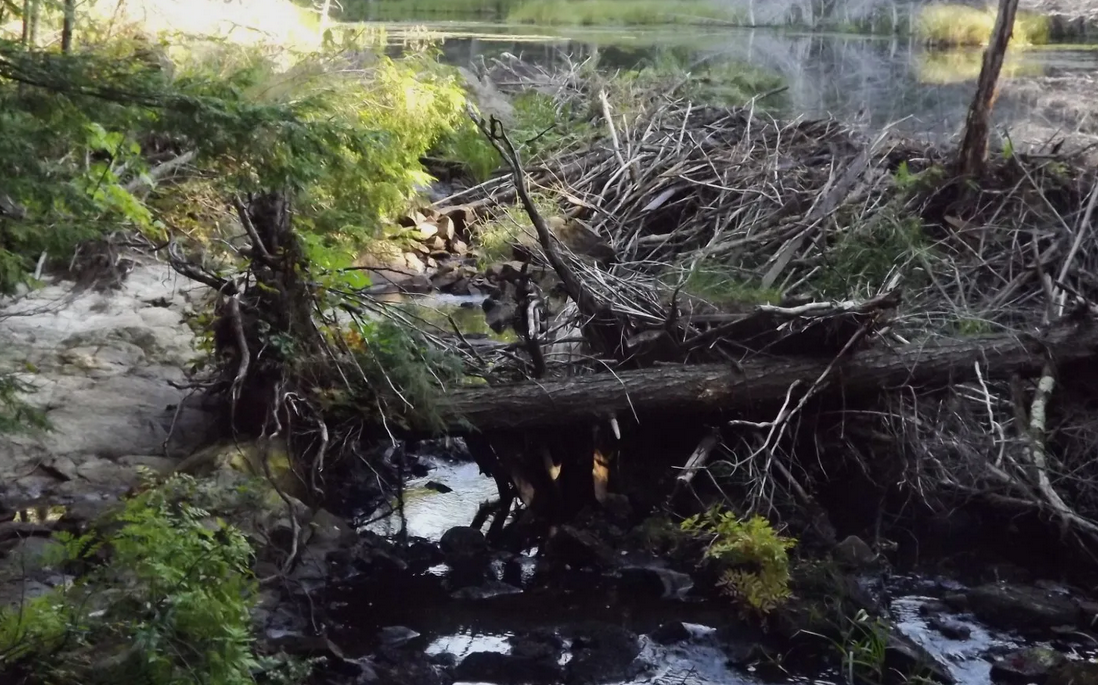
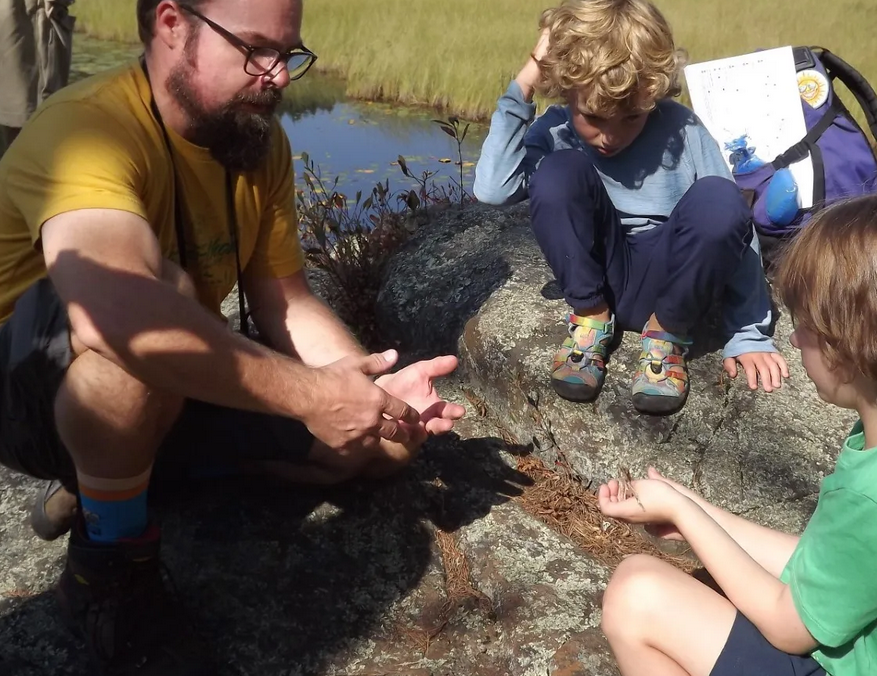 There is nothing better than being in nature to learn about nature. And if it has a special focus on beavers! Well that’s so much the better. Just remember what Enos Mills said in his closing words In beaver world.
There is nothing better than being in nature to learn about nature. And if it has a special focus on beavers! Well that’s so much the better. Just remember what Enos Mills said in his closing words In beaver world.
“No boy or girl can become intimately acquainted with the ways and works of these primitive folk without having the eyes of observation opened, and acquiring a permanent interest in the wide world in which we live.”
 Street Martinez didn’t like the beaver in the fishing mural and couldn’t be bothered to say so before hand. Ahhh dear, troubled Martinez, thank goodness you stopped yourself from being reasonable just in time. I was beginning to worry that people would think I’d been lying about how petty, vindictive and stubborn you could be.
Street Martinez didn’t like the beaver in the fishing mural and couldn’t be bothered to say so before hand. Ahhh dear, troubled Martinez, thank goodness you stopped yourself from being reasonable just in time. I was beginning to worry that people would think I’d been lying about how petty, vindictive and stubborn you could be.

